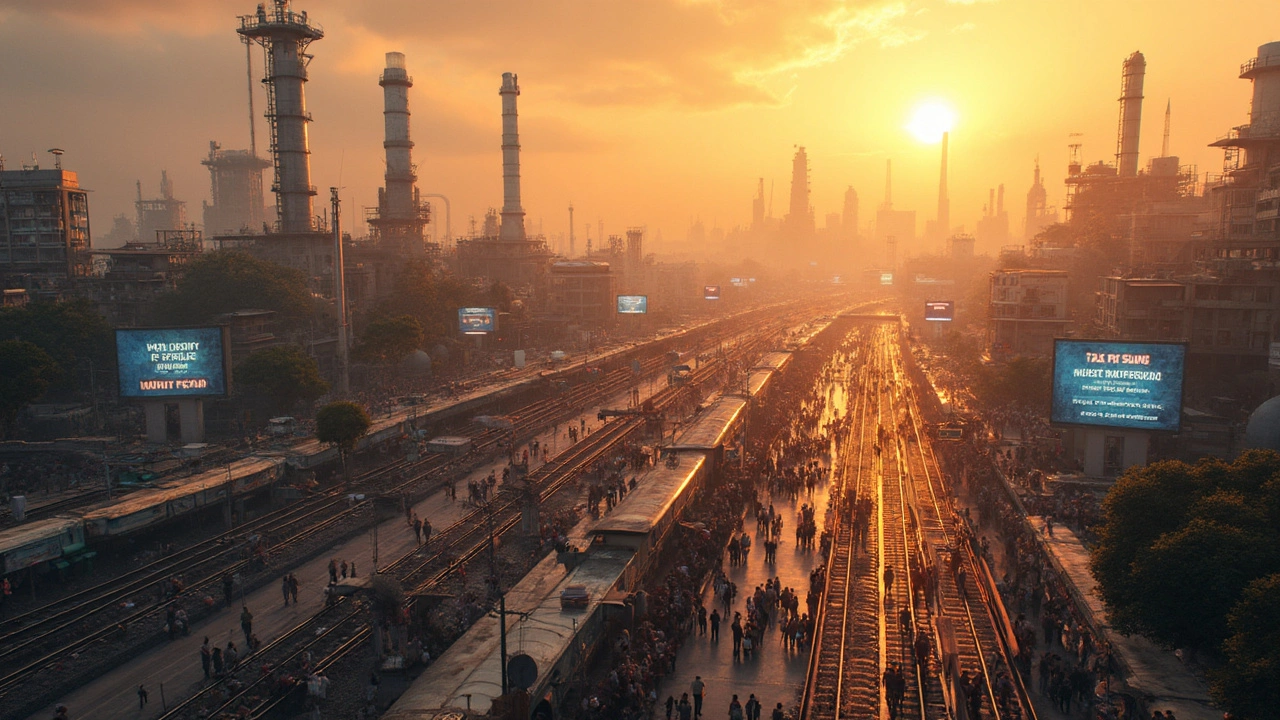 Feb, 11 2025
Feb, 11 2025
So, you're thinking of building a factory and the big question is: where? Well, it's not just about picking a state on a map. You need to think about all sorts of factors, like state incentives, infrastructure, workforce, and proximity to your target markets.
First on the list are government incentives and tax breaks. Let me tell you, some states offer hefty goodies just to lure manufacturers their way. These can come in the form of property tax reductions or credits for job creation. It's worth digging into local government websites to find out what's on offer.
Next up, think infrastructure and logistics. A state with solid transport networks can save you big bucks in the long run. Whether it's highways, ports, or railways, check how easily you can move your goods in and out. States like Texas have invested heavily here, making logistics a breeze.
Finally, don't overlook the workforce. You'll need skilled workers, pronto. Some states have excellent training programs and partnerships with local colleges to help build a skilled labor pool just for you.
- Incentives and Tax Breaks
- Infrastructure and Logistics
- Workforce and Labor Market
- Geographic and Market Considerations
Incentives and Tax Breaks
When it comes to setting up a factory, you want to make sure you're getting the most bang for your buck. That's where state incentives and tax breaks come into play. Each state offers its unique set of advantages aimed at enticing manufacturers like you.
Tax Incentives to Consider
A lot of states roll out the red carpet with tax incentives. For example, Indiana offers property tax abatements, while Tennessee has franchise and excise tax credits. These can make a significant difference in your bottom line. It’s crucial to research what each state offers and how these can reduce your operational costs.
Credits for Job Creation
Some states hand out credits for every new employment opportunity you create. Georgia's Job Tax Credit can net qualifying companies up to $4,000 per job. That's a sweet deal if you're planning to hire locally.
Grants and Funding Programs
Don't forget about grants. States like Michigan offer training grants to help you skill up your workforce. Plus, there are often special funding programs for businesses in renewable sectors or tech-driven manufacturing.
Navigating the Red Tape
Here’s a tip: each program has its own set of rules, so you’ll want to chat with local economic development offices. They'll guide you on eligibility and application processes, making sure you don’t miss out on potential savings.
| State | Tax Incentive Example |
|---|---|
| Indiana | Property Tax Abatement |
| Tennessee | Franchise & Excise Tax Credits |
| Georgia | Job Tax Credit |
| Michigan | Training Grants |
At the end of the day, pairing the right incentives with a strategic location can turbocharge your manufacturing venture. So take time to analyze your options; it's a decision that’ll impact your financial health for years to come.
Infrastructure and Logistics
When it comes to setting up a manufacturing plant, infrastructure and logistics are the backbone of your operations. A well-connected state can significantly cut costs and improve efficiency. So, what exactly should you look for?
Transportation Networks
First off, let's talk transportation. You need a state with robust networks, whether it's highways, railroads, or ports. Texas, for instance, has over 313,000 miles of public roads and multiple rail companies that streamline transporting goods. It's a huge plus if your state of choice has intermodal facilities—places where you can switch goods between trucks, trains, or ships without a hitch.
"Logistics are the lifeblood of manufacturing competitiveness, fueling growth and efficiency." - John Smith, Logistics Expert
Proximity to Suppliers and Markets
Another key factor is how close you are to your suppliers and your customers. Shorter distances mean faster delivery times and lower costs. The Midwest is often cited for its strategic location, allowing easy reach to major U.S. markets.
Utilities and Energy Access
Don't forget about utilities. Reliable and affordable energy is crucial. States like Georgia offer competitive energy rates and have been upgrading their grids to ensure continuity and sustainability.
To sum it up, evaluating a state's infrastructure and logistics will set you on a solid path for your manufacturing venture. From transport to proximity to efficient utilities, every detail counts in making your factory a success.

Workforce and Labor Market
Finding the right workforce is like picking the perfect ingredients for a recipe—get it wrong, and the whole thing can fall apart. If you're aiming to build your factory, you need skilled workers who can operate machinery, plan logistics, and maintain quality control.
Some states are better equipped to offer this than others, thanks to top-notch training programs and partnerships with local educational institutions. For instance, North Carolina has solid community college programs tailored to the needs of manufacturers.
Skilled versus Unskilled
When we talk about workforce, there's a hefty difference between skilled and unskilled labor. States with a higher proportion of skilled workers tend to offer more competitive wages and better conditions. Texas and Arizona often rank high because of their focus on tech education and training, which boosts skilled labor availability.
Wages and Cost of Living
You'll also need to consider what's the going rate for labor. States with lower wages like Mississippi and Alabama can be attractive, but think about the trade-offs—sometimes lower costs can mean a smaller pool of specialized skills.
Check out the table below for a snapshot of average wages in different manufacturing hubs:
| State | Average Manufacturing Wage |
|---|---|
| California | $75,000 |
| Texas | $68,000 |
| Michigan | $67,000 |
Employment Rates
The employment rate is another significant factor. States with higher employment rates often have a motivated, productive workforce. However, you may face steep competition for workers, driving up wages. Ideally, you'd want a state with a balance—plenty of workers, but not too much competition.
Bottom line? Do your homework before deciding where to set up shop. You're in for a smoother ride if you choose a state that ticks off everything on your workforce wishlist.
Geographic and Market Considerations
When deciding where to set up shop, the geography of a state can make or break your business. Location plays a huge role in your factory's success, especially in terms of market access and supply chain efficiency.
Proximity to Suppliers and Customers
Being close to suppliers and customers can slash transportation costs and lead times. For example, Texas is a favorite spot due to its central location, giving easy access to major markets like South and Central America. If you're dealing in a niche market, being where your clients are concentrated could give you a notable edge.
Natural Resources and Energy Costs
In some industries, natural resources can be a critical factor. States with abundant resources, like coal in West Virginia or water in Michigan, can offer lower input costs. Also, watch out for energy expenses. States like Idaho boast low electricity rates due to renewable energy sources.
| State | Average Electricity Cost (cents/kWh) |
|---|---|
| Idaho | 8.0 |
| Texas | 8.5 |
| California | 18.0 |
Climate and Risk of Natural Disasters
Weather and natural disasters can also be concerns. For instance, hurricane-prone states could face unpredictable downtimes. It's not a dealbreaker but something to keep on your radar. Opting for states like Ohio, which sees fewer natural disasters, might provide peace of mind.
Distribution Channels
Considering your distribution channels is vital. If you're exporting, states with major ports like Georgia or Virginia can offer logistical advantages. For domestic distribution, a state with good interstate connectivity can make distribution much easier.